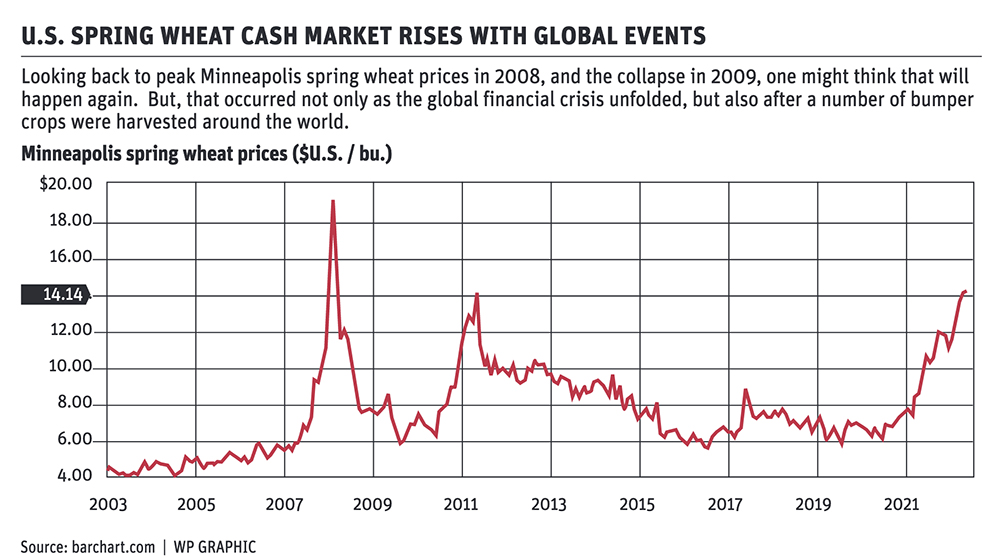Everywhere you look you see the R-word: Recession.
At least, that’s what you see everywhere in the financial press this week, after the mob of mainstream analysts who had been calling for continued growth and no recessions for a few years dramatically reversed themselves after recent inflation figures and the United States Federal Reserve’s three-quarter point rate hike and now see a big R incoming.
That’s going to pose a real test for the agricultural markets, and all the grain and meat prices you farmers rely upon. How well can agricultural prices withstand the economic slump and general commodity market weakness that attend a recession? That’s the question that’s going to get posed really soon, if the present grim forecasts of a recession prove accurate.
Read Also

India slaps 30 per cent import duty on yellow peas
India has imposed a 30 per cent duty on yellow pea imports with a bill of lading date on or after Nov. 1, 2025.
It’s been asked before, but not in similar circumstances. You might remember 2008, when spring wheat futures peaked at $25 per bushel and then collapsed within months to $6. But that occurred not only as the global financial crisis unfolded, but also after a number of bumper crops were harvested around the world, alleviating the pressure on buyers.
How much of the crop price slump was due to the deflating of the world’s simultaneous financial and economic systems and how much was due to crop supplies coming back into better balance with demand? We can never really know that. They were too inextricably linked to easily separate.
But this time, if a recession hits, and money dries up as interest rates surge, and if crop supplies stay tight, we might see that unfinished picture painted in a bit more.
Crops, more than meat, are not just like other commodities in the complex. People need them to survive and governments are often desperate to source them to avoid being dragged off to today’s political guillotines.
Copper, oil, steel and coal can be expected to sell off with any direct threat to world industrial and discretionary demand, but food crops aren’t truly discretionary, so they don’t have the same reason to sell off.
Some people believe that crop prices are simply a function of direct supply and demand for crops. Others believe that general bullishness and bearishness for commodities, and in all markets in general, play a significant role in crop price levels, with only some of the price of crops due to specific fundamentals.
I tend to think that overall market sentiment makes up a major part of the range that crop prices float within. Canola might rise or fall $3 per bu. because of some rain somewhere or a major drought in another area, but whether that range begins at $8 dollars per bu. or $18 has much to do with overall commodity market sentiment.
Maybe we’ll get a chance to find out this time. The market is setting itself up to let us see.
For the sake of growers, at least for this high-price year, I hope that most of the price of their crops is due to crop-specific supply and demand fundamentals. Everybody in crop-growing country needs these prices to last for a bit.
Skipping out on this (possibly) upcoming recession would be some compensation for those farmers who have suffered through two years of drought and a challenging spring.
















